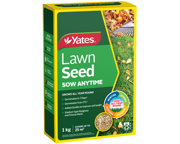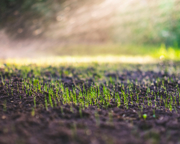Yates Account
Join now
Create a Yates account today!
Sign up to join the Yates Garden Club for monthly e-mails packed with seasonal inspiration, tips for success & exclusive promotions.
Plus if you’re a Garden Club member you can take part in the Yates Growing Community - a blog to share successes, get advice & win prizes in fun challenges along the way!

Forgot password
Enter the email address associated with your account, and we'll email you a new password.

Fine Fescues are unique among lawn grasses. They have the finest leaves, the most shade tolerance and the best cold-weather performance of all cool season varieties.
'Fine fescue' is a description that covers several grass species with similar features. These species include creeping red fescue, Chewings fescue, hard fescue and sheep fescue, which all have different growth habits.
Fine fescue prefers full sunlight, but has the best shade tolerance of any cool season species. Lawn seed blends for shady areas usually contain high percentages of creeping red fescue and Chewings fescue, because of their resilience in low-light conditions.
Creeping red fescue is a fine textured, needle-like grass that spreads outwards via underground rhizomes. Chewings fescue also grows into a fine-bladed turf, but has a more upright, clumping habit and doesn't have rhizomes, instead it spreads slowly by 'tillering' new leaves out from the base of the plant. When blended, this combination forms a dense, deep green, fine lawn.
Fescue species aren't well suited to heat or drought conditions, but to make up for it they're exceptionally tolerant of cold climates. Fescue also isn't ideal for for pets and kids play-zones, unless it's blended with perennial ryegrass to fortify it. Despite their shade-tolerance, fescues don't respond well to constantly moist soil. To reduce the risk of fungal diseases, it's wise to tackle any issues with poor drainage before sowing a fescue lawn.
Fescue seed reliably germinates within 7-14 days, although seedlings are slower-growing than ryegrass. In fact, fine fescues partner really well with ryegrass, which helps shelter the slower fescue seedlings by filling out and suppressing weeds while the slower fescue is getting established.
Fescues look their best when they aren't mowed too short. In fact, one of the best things about fine fescue is that it looks great even if you've missed a couple of mows!

















Share
Share this article on social media